|
The glass factory of George Bacchus & Sons, a Birmingham company, made a relatively small number of high quality paperweights in the late 1840s. Whilst there are contemporary records that confirm they made paperweights, there is no record of what they looked like! Over the years the paperweights of the style shown below have been attributed to Bacchus, and that is how collectors now describe them. Designs include concentrics (usually 5 or 6 row) and closepacks, but there are other less common designs too. Most have the outer ring of canes drawn right underneath to the centre of the paperweight, forming a basket. Some past authors described Bacchus paperweights as having 'pastel colours': they had clearly not seen many Bacchus paperweights, as strong colours are quite common.
The Islington Glass Works was also a Birmingham company. In 1848 the owner, Rice Harris, brought a number of French glassmakers to the factory because many of his employees were on strike. It seems likely that the few Islington paperweights were made by these workers, given the canes strongly resemble French millefiori canes.
|
|
Bacchus
Close pack design |
Bacchus
Concentric design |
Bacchus
Concentric design |
Bacchus
Concentric design |
Bacchus
Concentric design |
|
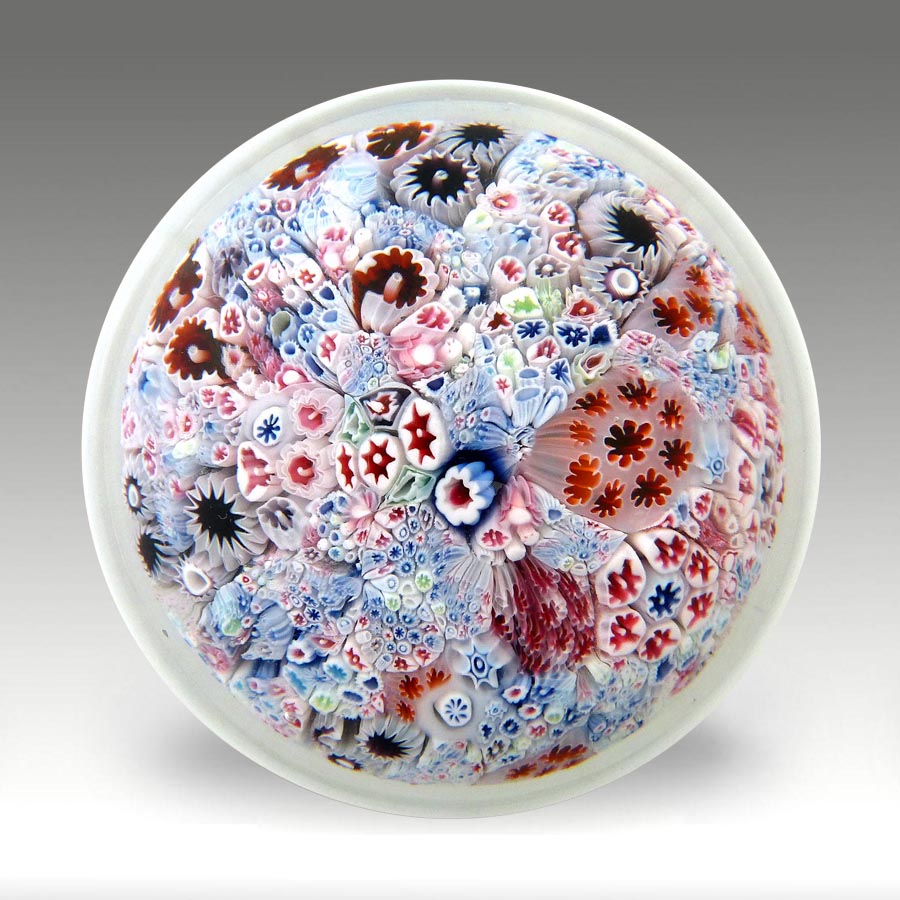
|
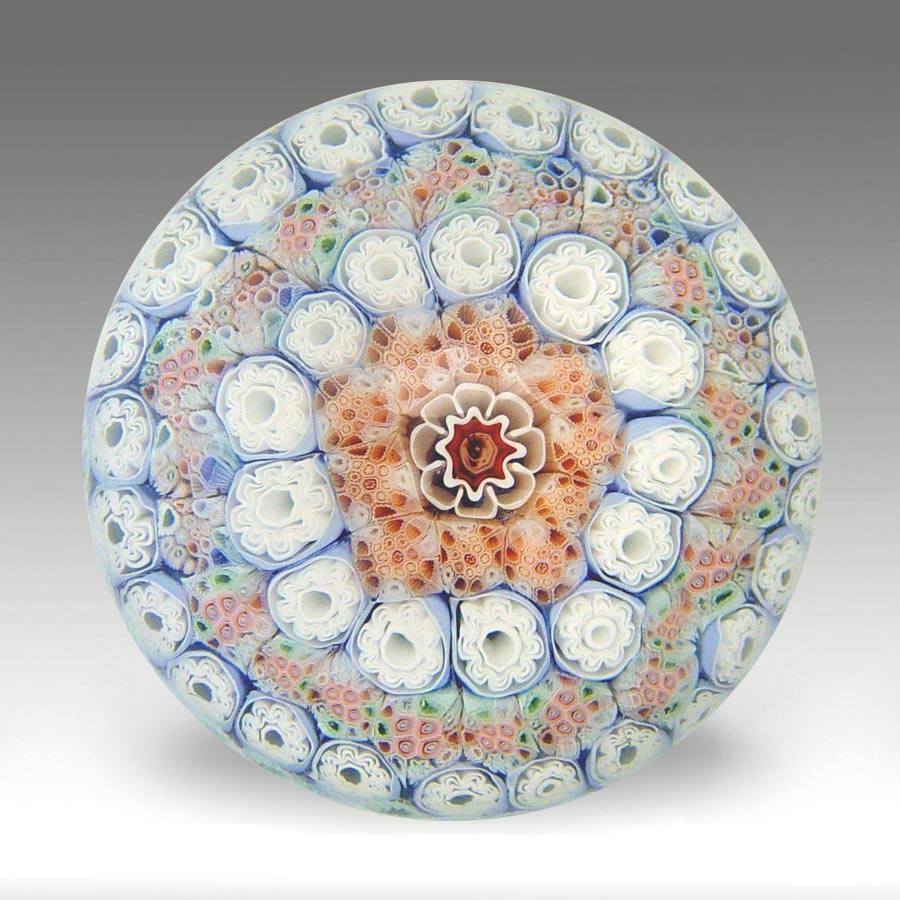
|
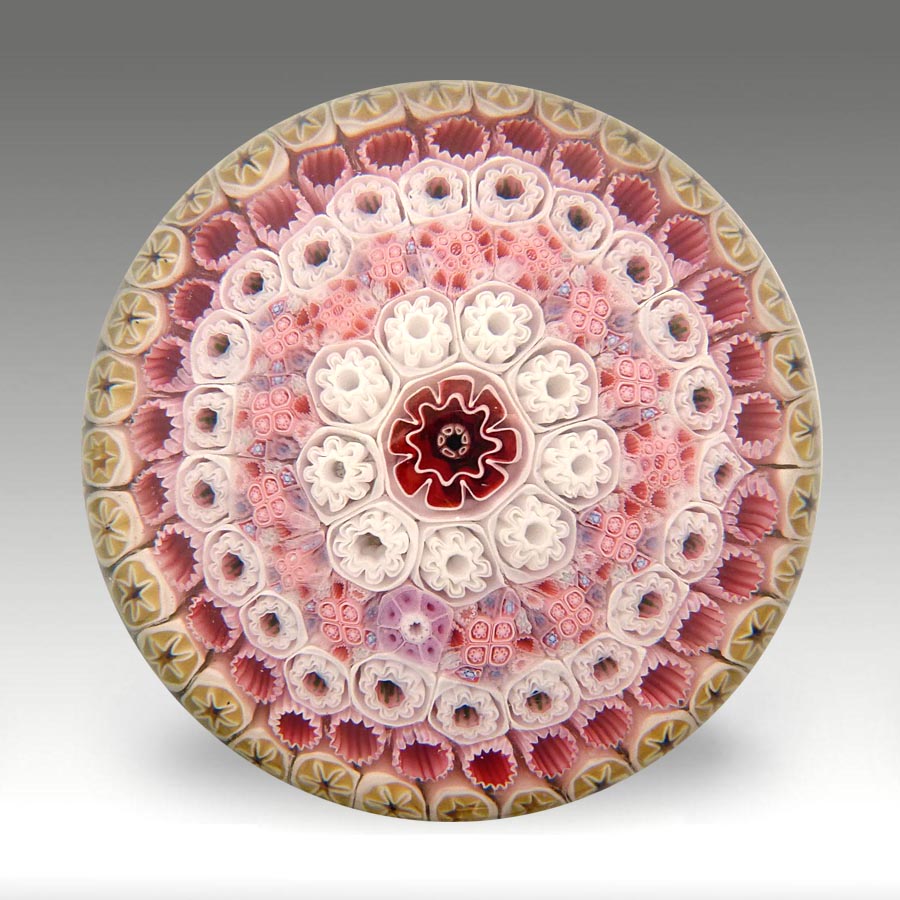
|
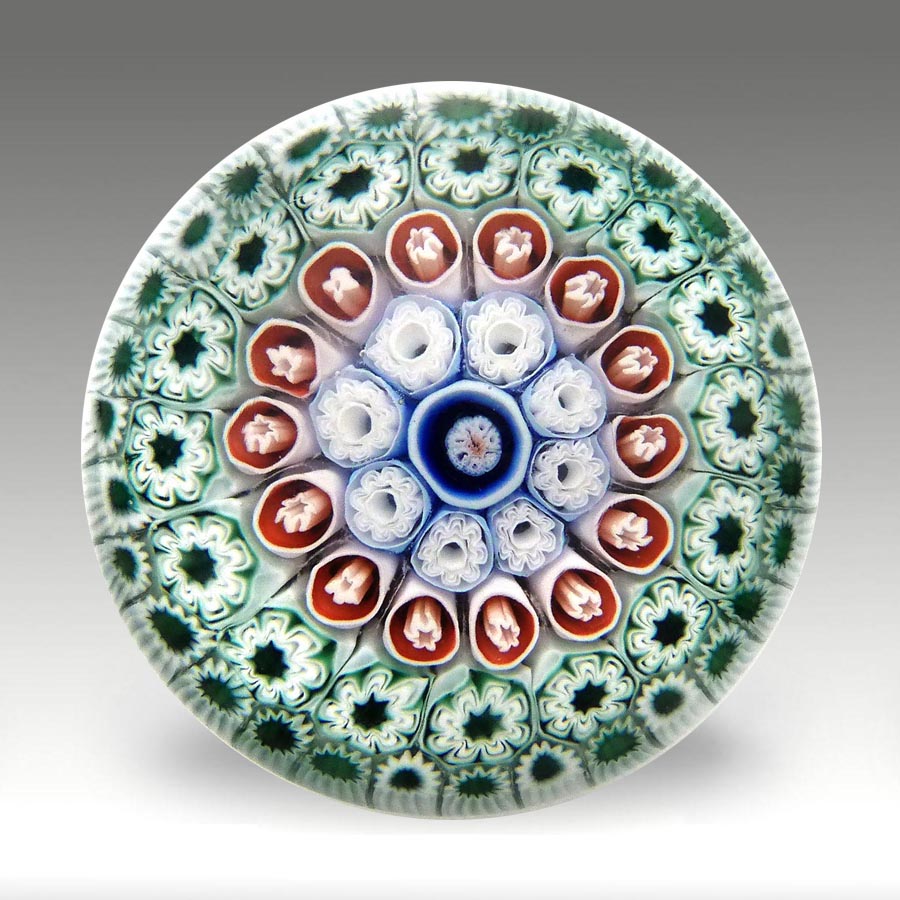
|
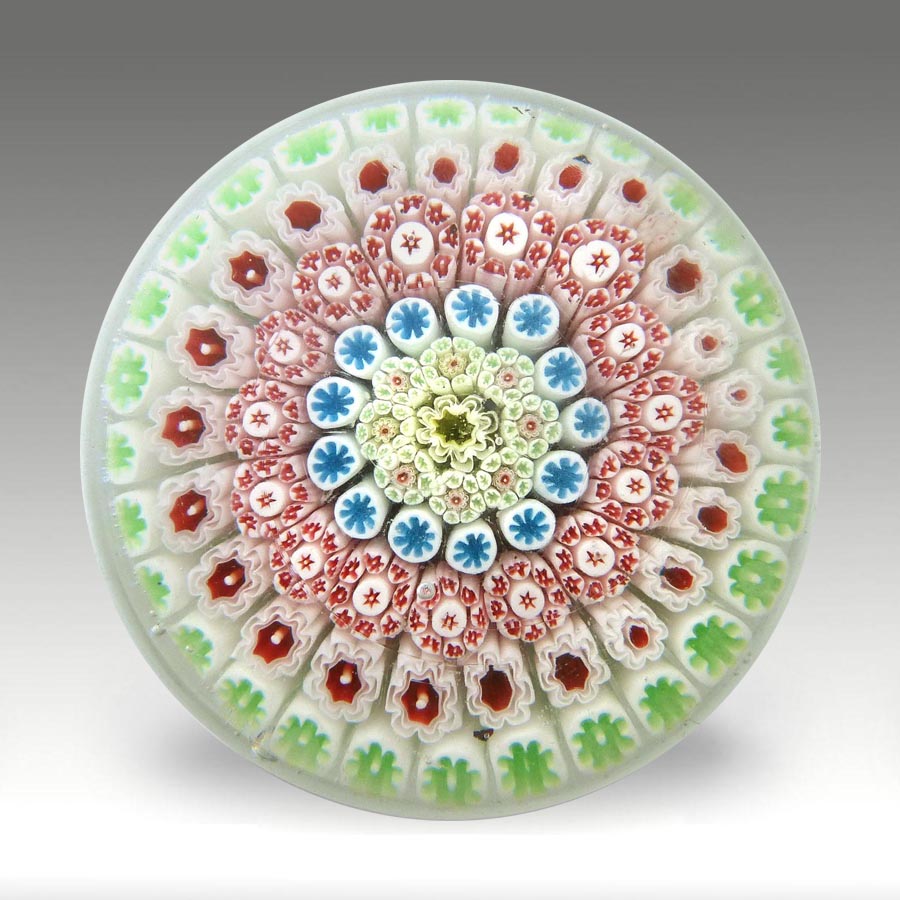
|
|
Bacchus
Close pack centre
|
Bacchus
Concentric design |
Bacchus
Concentric design
|
Bacchus
Concentric design |
Bacchus
Close pack design
|
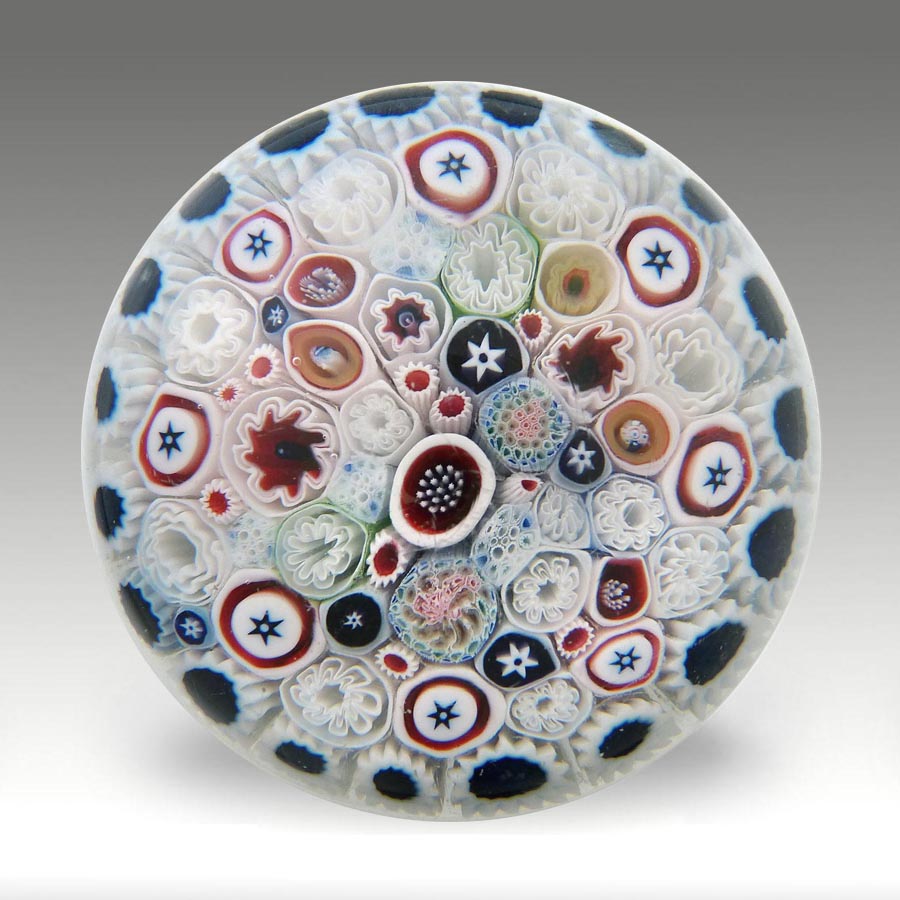
|
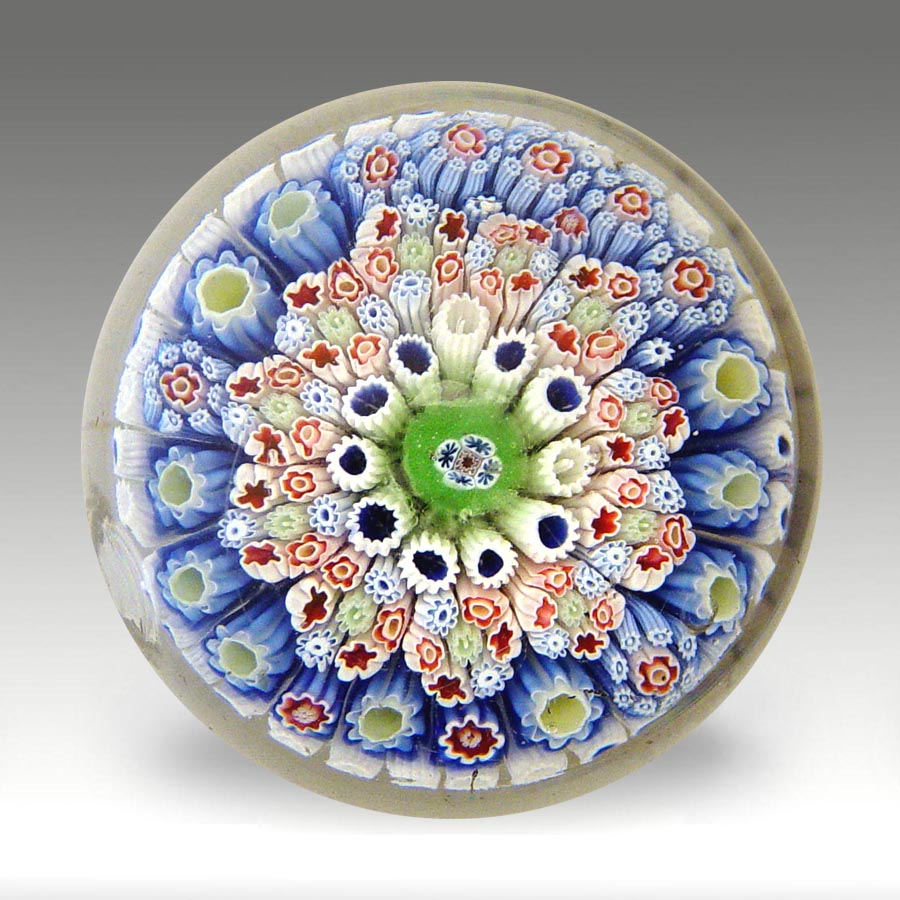
|

|
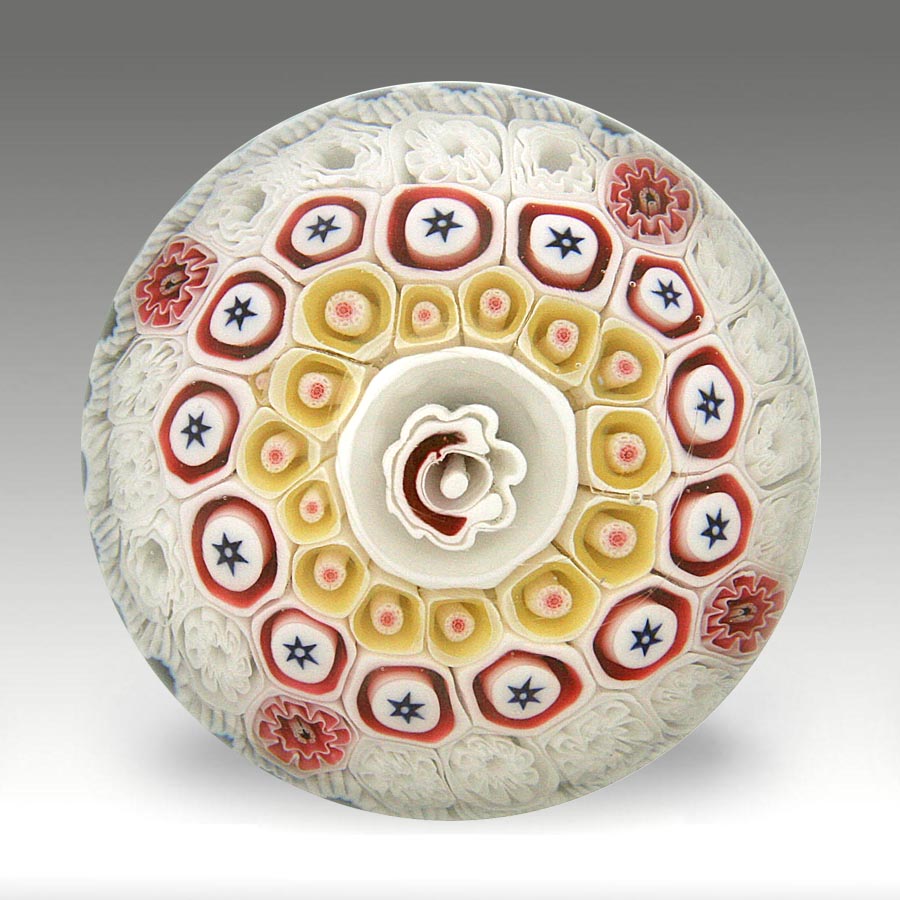
|
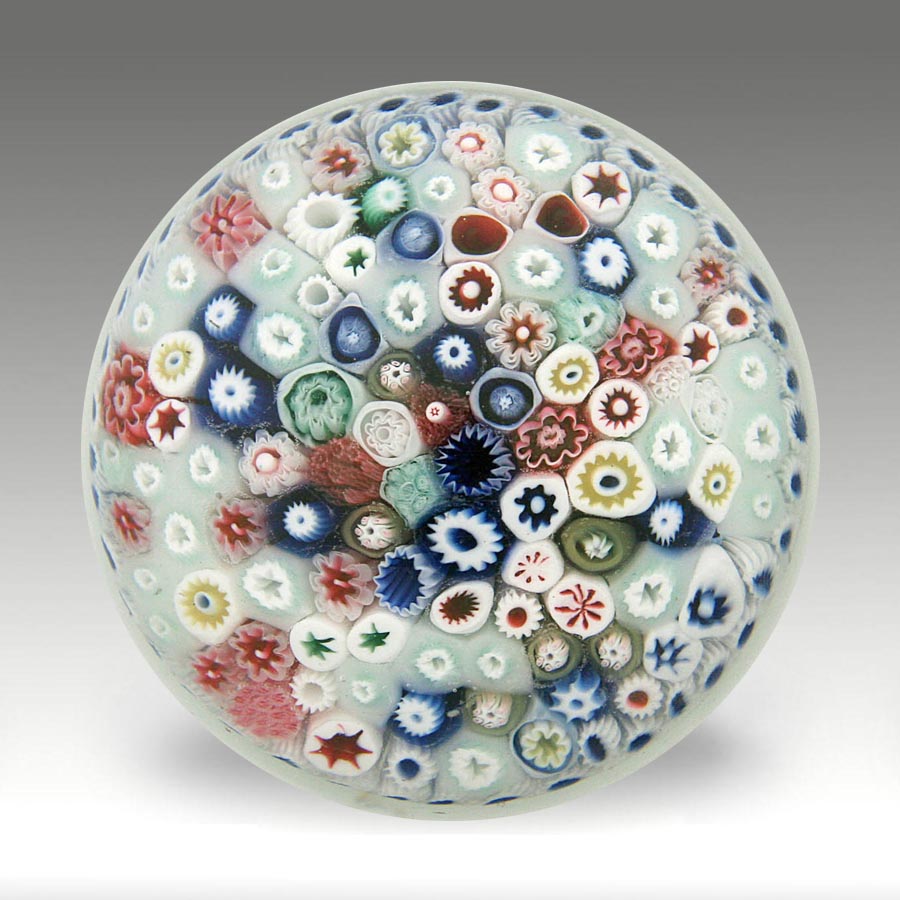
|
Islington
Close pack design |
Islington
Close pack design |
Islington
Green ground, silhouettes |
Islington
Typical canes |
Islington (probably)
Stave basket design |

|
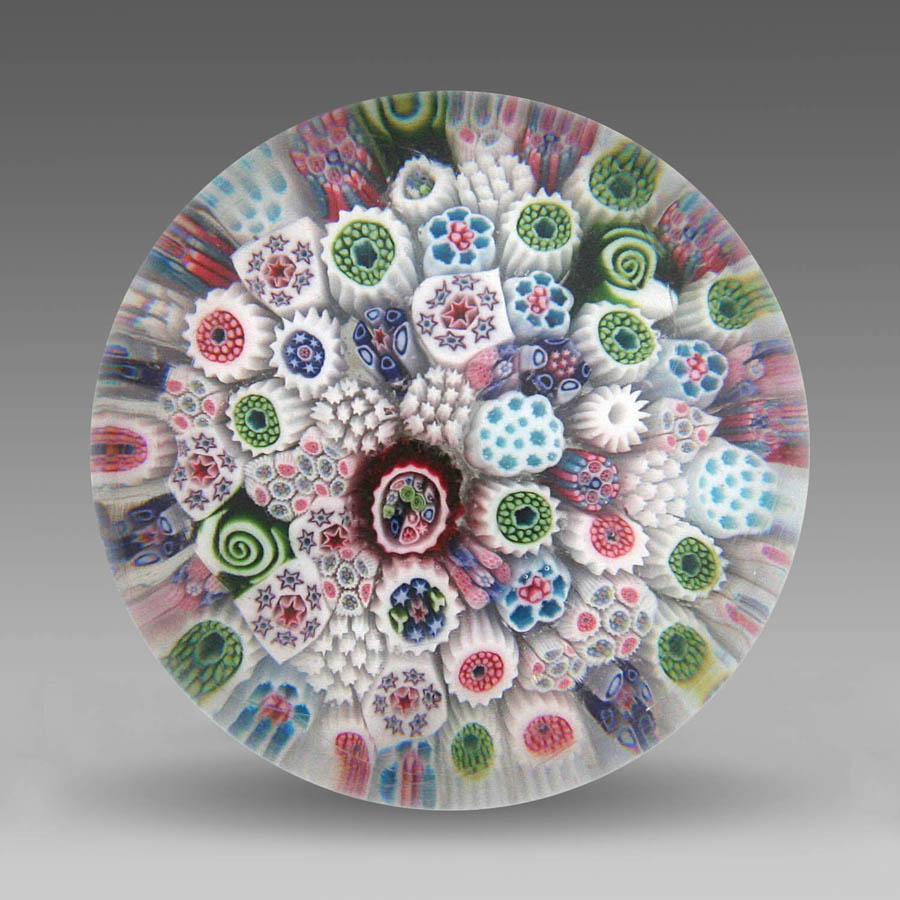
|
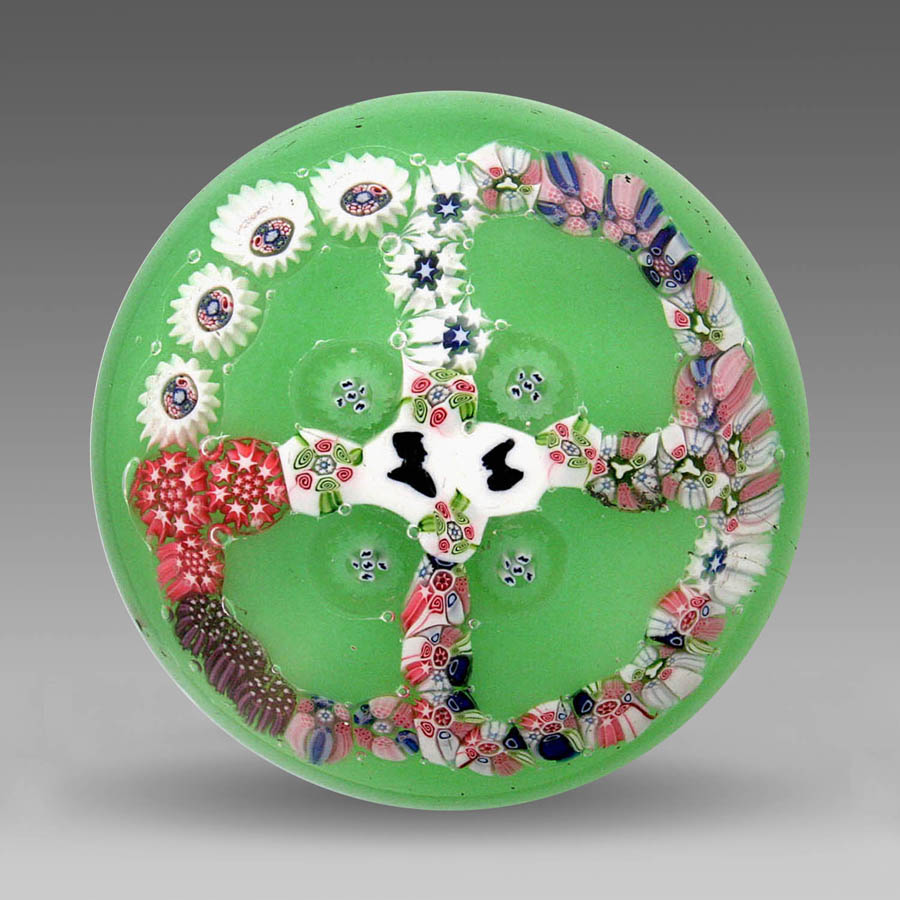
|
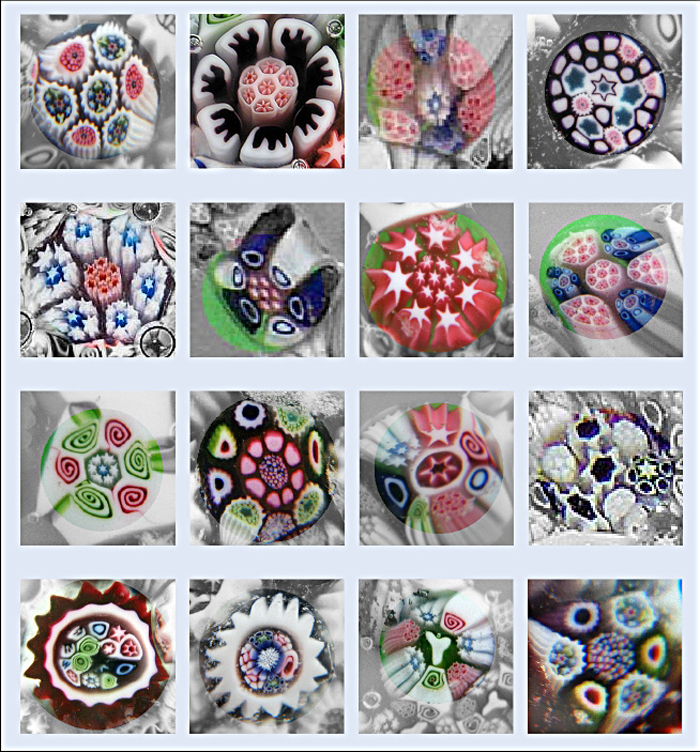
|
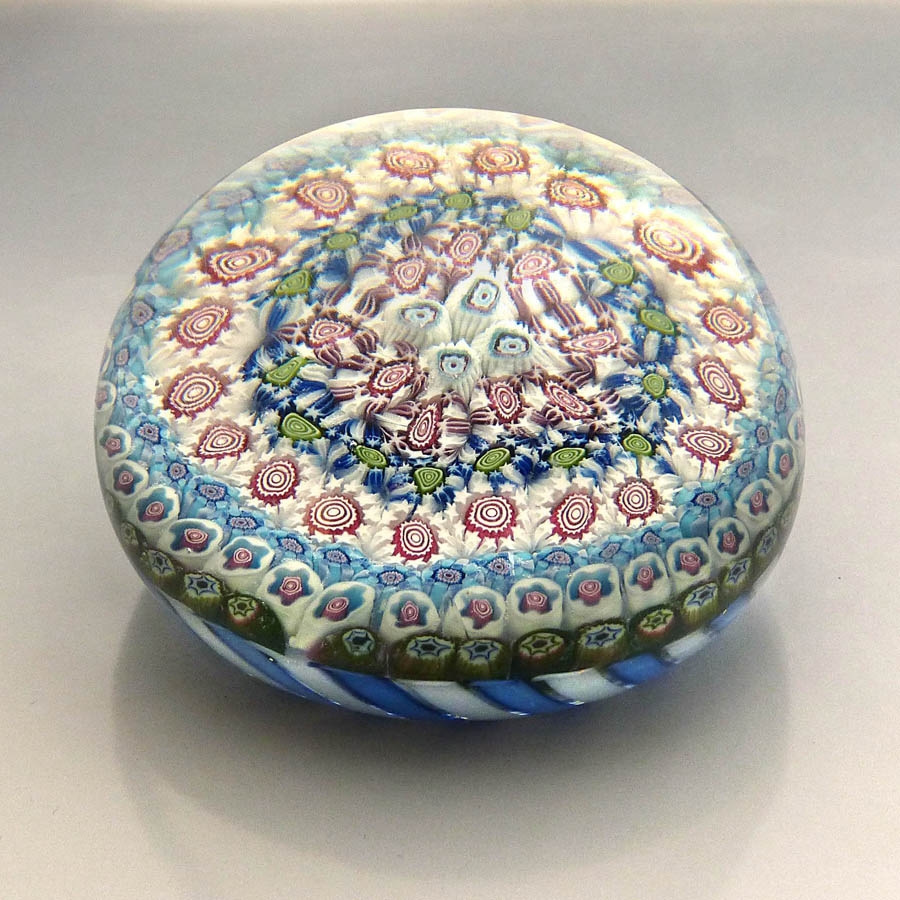
|
|
|
|
|
|
|
|
|
|
|
